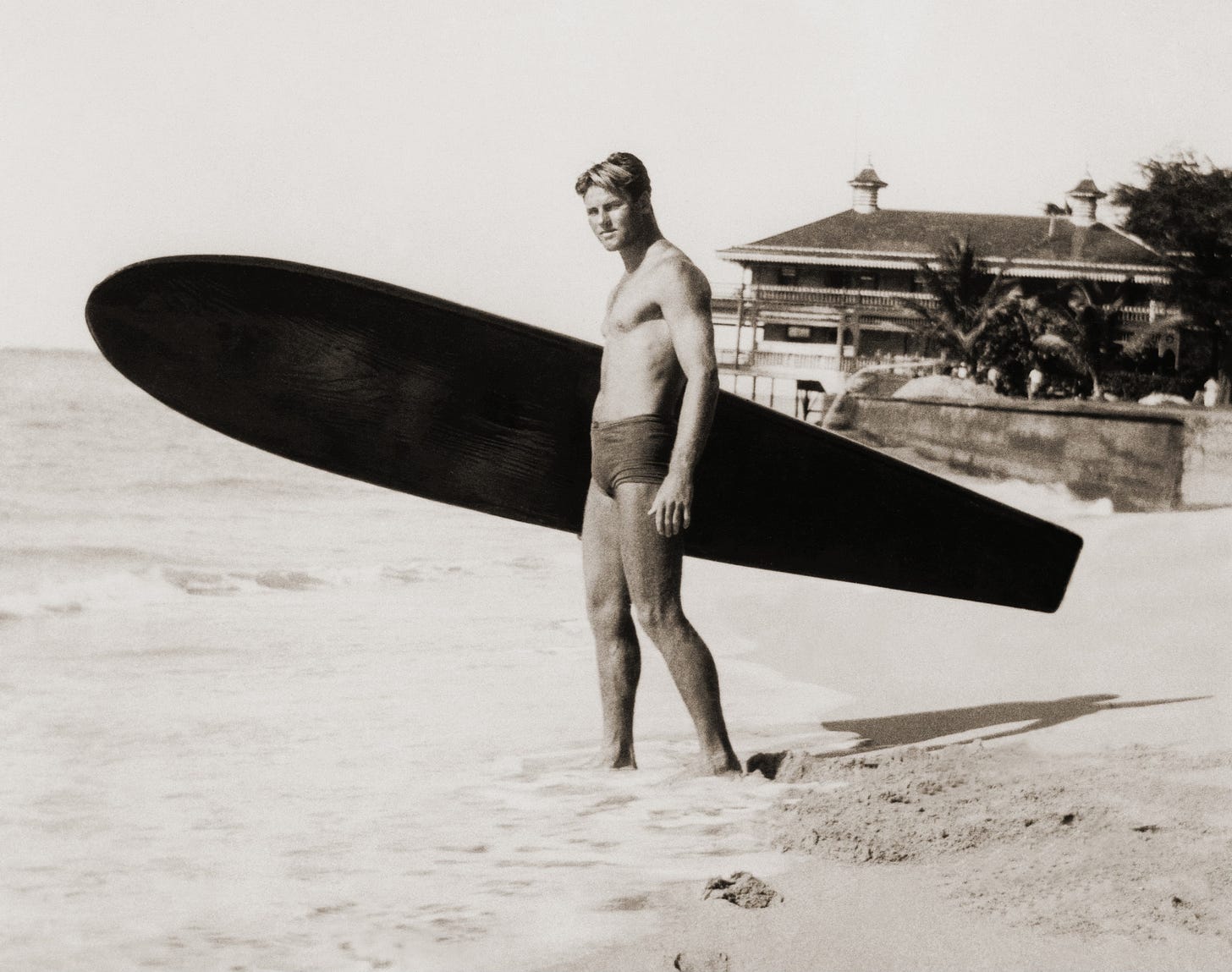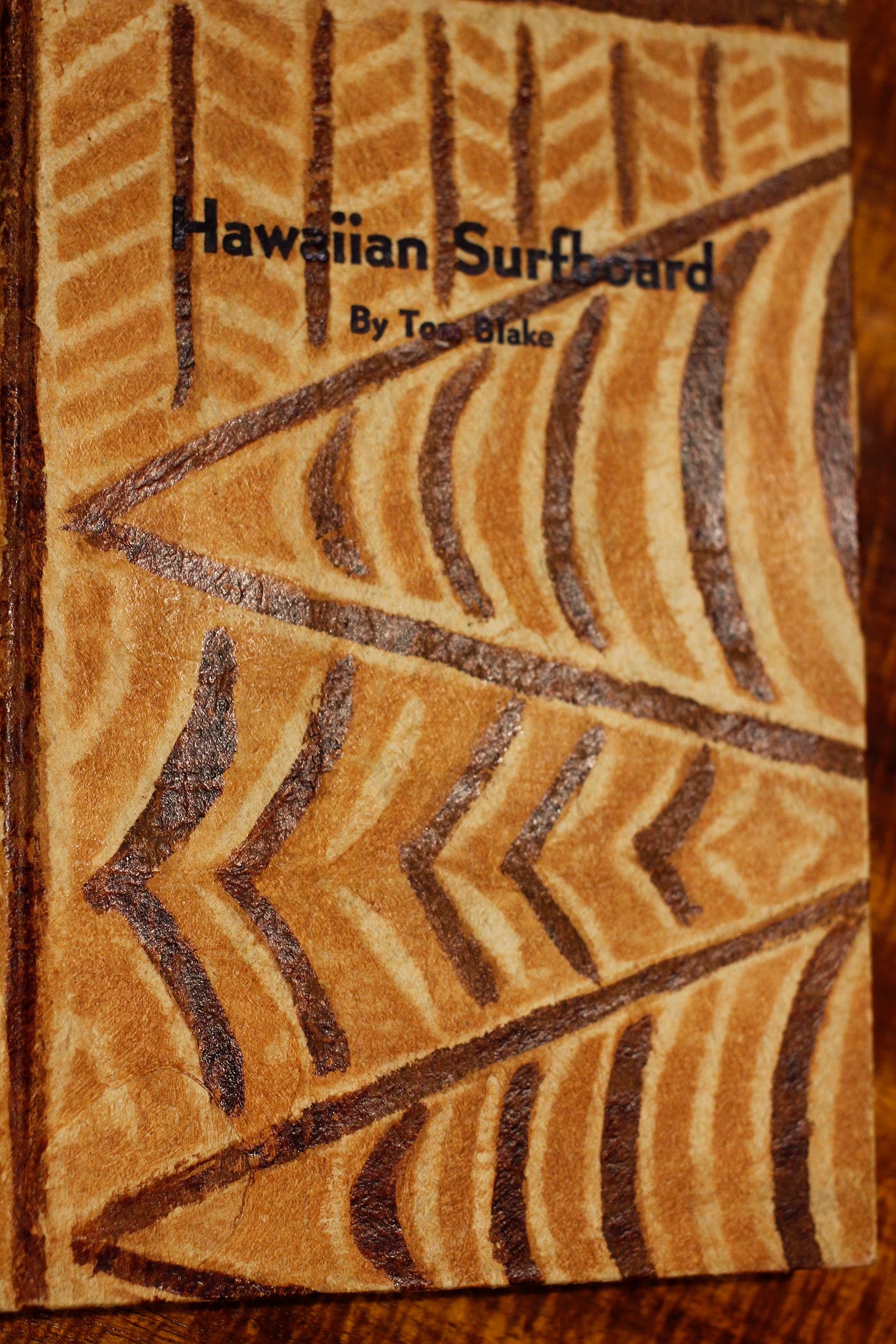Surfing's Origins - Tom Blake
Southern California was really the tip of a burning spear in the late 1940’s and 1950’s. By this time Tom Blake and had already made changes to surfing that were just beginning to be realized on the mainland. Hawaii was really the place it all started, but it quickly spread to Southern California. There are so many names so I’m going start close to the beginning of the Cali connection with Tom Blake (1902–1994). When I was in the final stages of the first cut of this film, I was introduced to Spencer Crowl (Crowl Family Foundation). Spencer opened his extensive archives to me along with his vast knowledge of Blake and the beginning surf scene. Spencer showed me a world I had been trying to find for some time. I am forever grateful for the history he shared with me, but most importantly, for his aloha and his smile, Thank you Spencer!
Tom Blake was an iconic figure in the history of surfing, credited with revolutionizing the sport through his innovations in board design and his contributions to its culture. Born in Wisconsin, USA, Blake's early years were marked by a deep love for nature and adventure. He moved to California in his early twenties drawn by the allure of the Pacific Ocean and the burgeoning surfing scene. When Blake first moved to California he lived in a closet above the exclusive Los Angeles Athletic Club so he could swim.
Blake was already fasinated with surfing when he boarded his first ship in Long Beach and headed for Hawaii. He was particularly inspired by the ancient Hawaiian surfboards, known as "olo" and "alai'a," which were long, narrow wooden planks used by the native Hawaiians for wave riding
In the 1920s, Blake began experimenting with board designs, seeking to improve upon the heavy, cumbersome solid wooden boards that were prevalent at the time. He pioneered the use of lighter materials such as plywood and balsa wood, which allowed for greater maneuverability and speed in the water. Blake's innovations included the hollow surfboard, which featured a cavity inside the board to reduce weight while maintaining buoyancy—a design that revolutionized the sport and became the standard for decades to come.
In addition to his advancements in board design, Blake was also a prolific writer and photographer, capturing the spirit and essence of surfing culture through his writings and images. A close companion of Duke Kahanamoko, he authored several influential books on surfing, including "Hawaiian Surfboard" and "The Art of Wave Riding," which not only documented his own experiences but also helped popularize surfing around the world.
Blake's impact on surfing extended beyond his technical innovations. He was deeply passionate about preserving the history and traditions of the sport, working tirelessly to promote its cultural significance. A bad surfing accident in Hawaii in 1952 ended his surfing career. In 1955 he left Hawaii, believing it had become too crowded, and became a wanderer on the mainland, mostly California. A deeply spiritual man, Tom’s essay “The Voice of the Atom” stated Nature = God. He was a strict vegetarian his entire life. In 1986 he returned to Ashland, Wisconsin where he lived in a simple apartment 1/4 mile from Lake Superior.
Tom Blake may have changed surfing more than any single individual, ever. I hope you find inspiration in Addicted to Joy. I invite you to watch, Aloha.
I’d like to thank you all for reading Wood Water Soul. We’d like to announce we have moved Addicted to Joy to a new streaming service, and now when you rent or buy Addicted to Joy you also get full length interviews with Paul Strauch Jr., Patti Paniccia, and Kathy Kohner. This is great entertainment, please share it with a friend.
Subscribed








